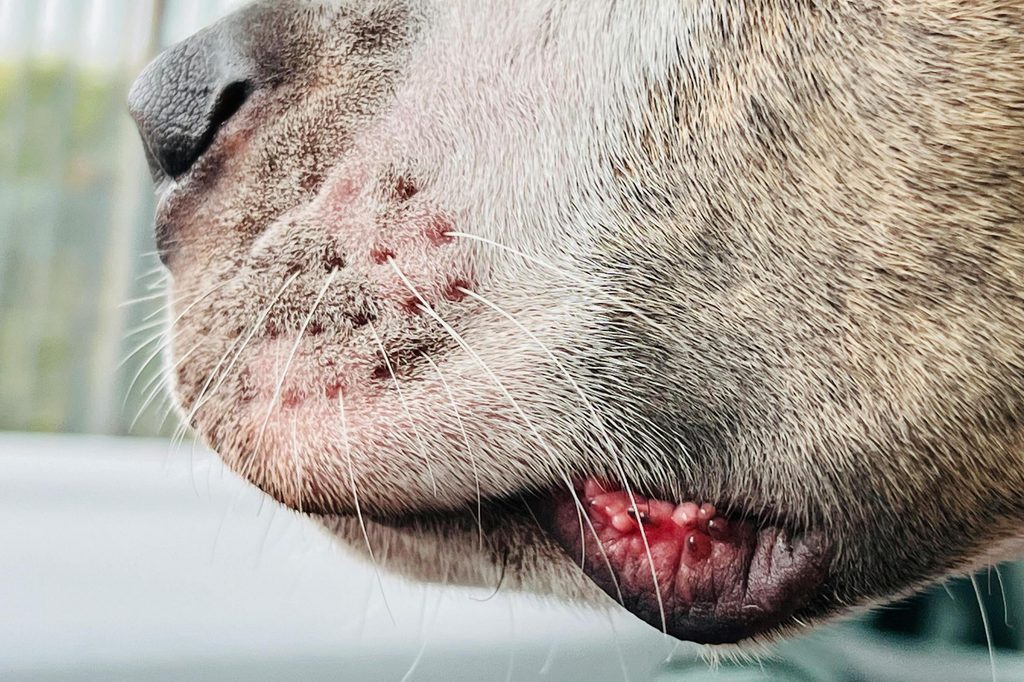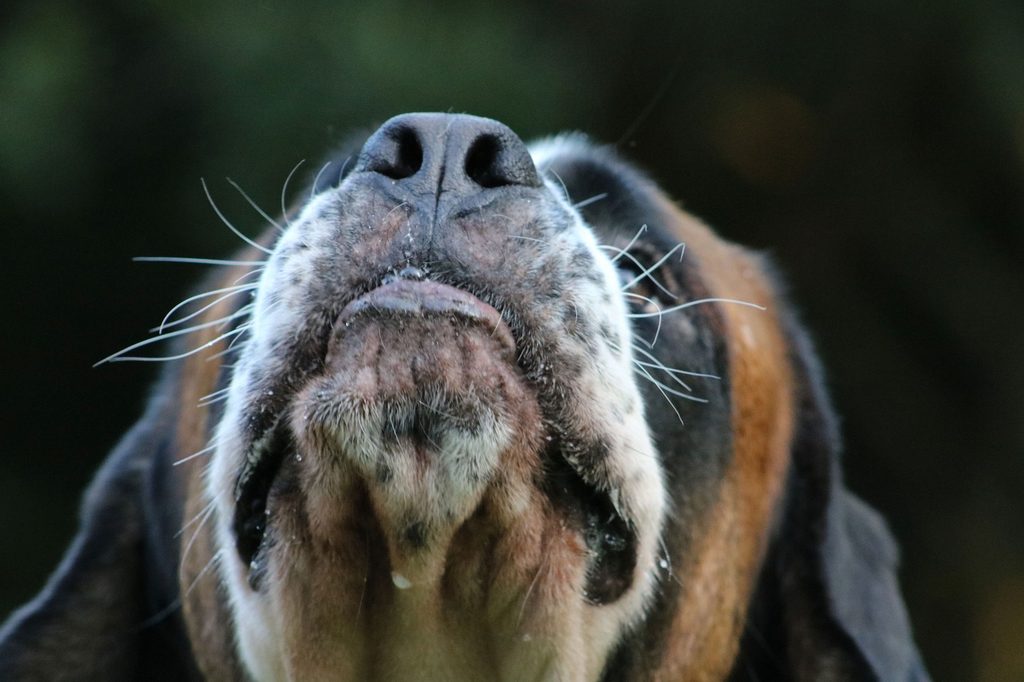
If you’ve ever noticed those extra-long hairs on your dog’s face, it’s only normal to wonder what they are and what they do. Whether your buddy visits the groomer or gets their fur brushed at home, it’s hard not to notice these hairs. Dogs can turn away and even paw at their face when they’re touched, so they surely serve a purpose. As it turns out, they’re actually dogs’ whiskers! But why do dogs have whiskers?
These whiskers, or vibrissae, are important for the way dogs sense the world around them. They provide all kinds of sensory information through nerve endings under the skin, but how exactly do they work?
Do all dogs have whiskers?

Actually, yes! Although many dogs have whiskers that are much more prominent than those of other pups, all dogs naturally develop whiskers. However, they may not look the same on each dog, and some may no longer be there at all. If you take your dog to the groomer for a haircut on a regular basis, for example, their whiskers may be trimmed right along with the rest of their hair or fur.
It’s also important to consider that whiskers aren’t only the stiffer, prominent hairs on a dog’s snout or chin. When a dog has especially long eyelashes or eyebrow hairs, those are whiskers, too. A dog’s vibrissae are often located “above the eyes, on the chin, and above the upper lip,” according to Ryan Llera, BSc, DVM, and Lynn Buzhardt, DVM, from VCA Animal Hospitals.
Whiskers are some of the first hairs that grow when a puppy is born, and they can be straight or curly, depending on a dog’s genetics. Whatever these vibrissae look like, they are deeply rooted and thicker than the rest of your pet’s hair, allowing them to use whiskers as a way to pick up sensations from the world around them.
Why do dogs have whiskers?

When talking about human facial hair, “whiskers” refer to a man’s mustache or beard, but when talking about dogs, whiskers are more of an extension of the animal’s sense of touch. These long hairs contain deep blood vessels and nerve endings that pick up on the slightest movement or pressure, including the smallest, gentlest summer breeze.
Essentially, whiskers are to dogs what antennae are to insects. They allow dogs to learn more about their environment through touch, whether it’s detecting a nearby wall while walking in the dark or feeling the dust on an old surface. They can even help a dog decide when — and when not to — enter narrow spaces. Think of vibrissae as another layer of protection for the eyes and face.
Now that you know all these canine fun facts about the whiskers on their faces, you may think twice the next time you twirl or play with these long hairs. They’re quite sensitive. You can also make the best decisions at your dog’s grooming appointments, as trimming the whiskers isn’t always a great idea. Now you know!



